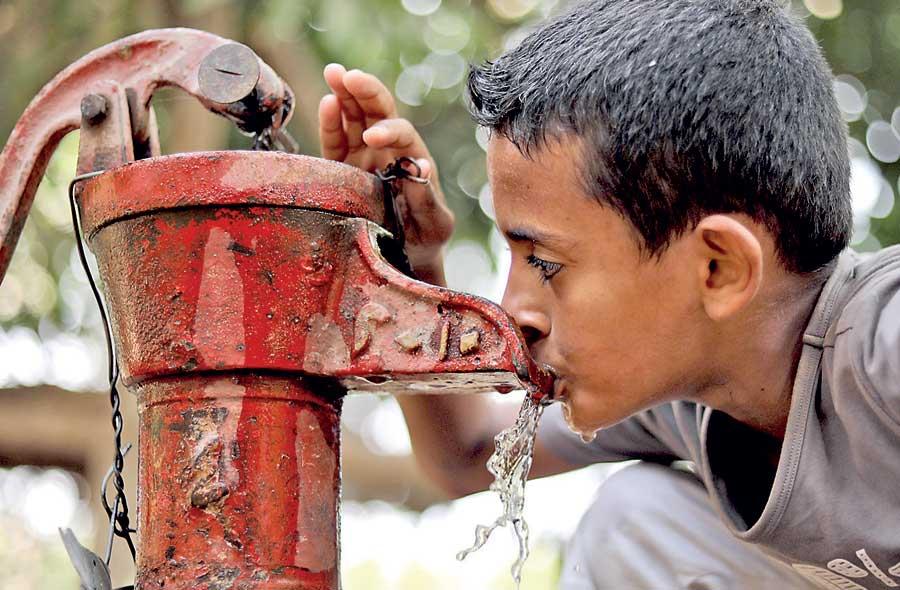22 Mar 2019 - {{hitsCtrl.values.hits}}

- Safe access to water and sanitation should be available for all people by 2030
- It is evident over the past year that rainfall patterns have gone through drastic changes
- Rainfall is the only source that helps replenish our water resources
March 22 marks World Water Day, but what significance does this really hold?
This year’s theme is ‘Leaving no one behind’, adapting the central promise of the 2030 Agenda for Sustainable Development that as sustainable development progresses, everyone must benefit, and safe access to water and sanitation should be available for all people by 2030.
According to a 2017 report by World Health Organisation (WHO)/United Nations International Children’s Emergency Fund Joint Monitoring Programme for Water Supply, Sanitation and Hygiene: In 2015 estimates for safely managed drinking water were available for 96 countries (representing 35% of the global population), and for 4 out of 8 Sustainable Development Goals regions. 844 million people still lacked even a basic drinking water service.
With a per capita water availability that exceeds our per capita water requirement, Sri Lanka is known for its water resources which are in abundance. Hence, farming communities, industries and households have carried on depleting, polluting and exploiting these resources in the face of a rising crisis.
Speaking to Daily Mirror, Researcher at International Water Management Institute Mohamed Aheeyar described the many dimensions of the current issues.
It is evident over the past year that rainfall patterns have gone through drastic changes, which is problematic especially for a rainwater dependent nation such as us.
“Rainfall variability within the country is very high; from 900mm to 5000mm. Rainfall is the only source that helps replenish our water resources. We get rainfall during Yala and Maha, and the other part of the year is mostly dry,” Aheeyar explained.
The limited rainfall that would ideally replenish the environment and recharge groundwater mostly flows into the sea. Not to mention, evaporation rates and temperature changes owing to climate change further escalates the problem.
Water saving technologies, rainwater harvesting, efficient farming as opposed to traditional crop cultivation, drip irrigation, alternative wet and dry method cultivation and farm ponds are a few adaptations Aheeyar mentioned that should be practised. He added that while the government has attempted to introduce certain new mechanisms such as these they have failed because farmers are unaware that water is a scarce resource. However, if the Government would introduce subsidies and low-cost technologies the farming community’s refusal to change their traditional methods may be overcome.
According to the Ground Water Foundation, Groundwater is the water found underground in the cracks and spaces in soil, sand, and rock. The threats to groundwater are manifold: Contamination (through products like untreated waste, toxic pesticides, fertilizers etc), overuse and depletion (lowers the water table, reduces surface water supplies etc) Nitrates in drinking water and on-site wastewater treatment systems are just a few to name.
“When it comes to land you have borders, but groundwater has no borders. If you pollute in one place, you pollute the entire aquifer.”
Saltwater intrusion due to a decrease in groundwater is also a reality. This is the movement of saline water into freshwater aquifers which then contaminates drinking water sources.
The fact that groundwater is not governed by a specific authority worsens these problems.
Rules and regulations govern the entire spectrum of offenses; from the coastal zone where tourism motivated hotels excessively extract groundwater, to massive industries pumping industrial waste into waterbodies.
"Effluents generated from common wastewater treatment plants of export processing zones/ industrial parks may contain complex chemical mixtures which may pose detrimental effects"
Effluents generated from common wastewater treatment plants of export processing zones/ industrial parks may contain complex chemical mixtures which may pose detrimental effects.
The Journal of the National Science Foundation of Sri Lanka (2018) which assessed the toxicity of two industrial zone effluents reaching Kelani River stated that “among the major rivers in Sri LANKA, Kelani River is considered as the largest recipient of industrial waste. It serves as a habitat for diverse flora and fauna and is a main drinking water source to the general public in that area.”
Apart from the quantity of water that is available for consumption, we are also facing threats to its safety and quality.
“In the Kalpitiya Peninsula, for example, the groundwater is used for intensive cultivation and the water is heavily polluted. The Nitrate and Phosphate levels of the entire Kalpitiya area is beyond the WHO recommendation now. So it is not usable for drinking,” expressed Ayeehar.
According to the Asia Development Bank’s South Asia Working Paper Series (2015): “On a national basis, safe water coverage (defined here as the proportion of the population having access to water supplies from piped water systems, protected wells, or rainwater systems) is almost 85%. About 44% of the population (over 9 million people) have access to piped water, 3% (more than 0.6 million) have access to hand pump tube wells, 36% of the rural population has access to safe drinking water through protected dug wells and 1% of the population uses rainwater harvesting systems.
The other side of the coin, however, is that 15% of the population is unable to access a safe water source within 200 meters of their residence.
Nevertheless, and even though Sri Lanka has a better record than other countries in the region in terms of the provision of access to safe water supplies, challenges remain with respect to maintaining service levels to current users while, at the same time, extending services to the presently unserved population—currently estimated at over 3 million people.”
From ancient times Sri Lankans have resorted to shallow wells to extract groundwater for 80% of their drinking and domestic needs. Increasing population, agricultural and industrial activities have increased the tendency to resort to extracting groundwater through deep tube wells. The availability of groundwater has started to deteriorate.
WRB Research and Development Assistant General Manager R. R. G. R. Rajapakse explained that “before 2017 companies have tapped groundwater without WRB approval. We didn’t have the necessary resources to control that.”
Since 2017 under the extraordinary Gazette published in March 2017 under the WRB Act of 1964, WRB has stepped up to regulate the use of groundwater resources. The Gazette requires institutions and individuals accessing groundwater resources to obtain written permission from the WRB. To avoid regional level issues that surfaced in the process, WRB is carrying out the initial work to implement a new system in April 2019.
"The process of obtaining approval to construct deep tube wells for both domestic and industrial use will begin from the Grama Sewaka level"
The process of obtaining approval to construct deep tube wells for both domestic and industrial use will begin from the Grama Sewaka level in the near future instead of the previous centralised system run through the WRB.
Now applicants will be required to obtain the Grama Sewaka Niladhari’s and Divisional Secretariat’s approval. The administration officials are required to confirm whether the locations are desirable to construct deep tube wells. Upon receiving the approval from administration authorities, a WRB registered hydrologist will issue a groundwater investigation report. The required approvals and reports are considered before a recommendation is given by WRB to construct dep tube wells.
A recent United Nations report identified Sri Lanka as second most vulnerable country to climate change in the word. WRB General Manager G. R. R. Karunaratne said that they identify the threat of climate change and the urgency in acting to preserve the groundwater resources in Sri Lanka. Recent changes in climate have altered rainfall patterns forcing users of surface water resources to resort to groundwater for their usage. He said the Government has recognised the need for fast action and much of the regulations were imposed since 2017. However, some deep tube wells constructed by private parties before 2017 which are not registered with WRB are still in operation hindering water resource management by WRB. Groundwater is the cheapest and safest source of drinking water supply. The widespread on-site disposal of un-sewered domestic wastes, increase in the use of fertilisers and pesticides and uncontrolled on-site discharge of industrial effluents are increasing risks to groundwater resources in
The general public is encouraged to raise their concerns regarding the quality and quantity of groundwater in their areas to the WRB through telephone, on 0115659089 and 0112696194.
The task of water conversation is one that is relevant to the entire global village and recent initiatives around the world reveal that many nations have begun their mission.
Addressing the serious dearth of water in East Africa, various organizations have raised funds, provided WASH (Water, Sanitation and Hygiene) training and created wells, trained locals to operate drilling rigs etc. The ‘Water for Life’ campaign which launched on World Water day 2015 aims to provide clean, drinking water to one million people by 2020.
It is evident through the global out reach of aid and action to end the water crisis in all nations that the message of ‘leaving no one behind’ is being taken seriously.
As individuals who are inexorably part of this problem, you can begin your contribution by asking yourselves:
How often do you use water each day?
Which activities use the most water?
What would happen if you were told you couldn’t have a glass of water?
29 Nov 2024 29 Nov 2024
29 Nov 2024 29 Nov 2024
29 Nov 2024 29 Nov 2024
29 Nov 2024 29 Nov 2024
29 Nov 2024 29 Nov 2024